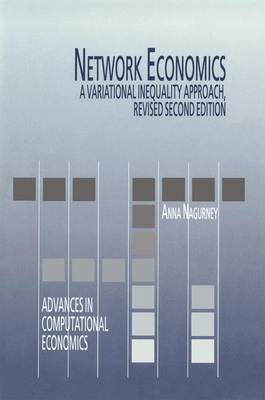Advances in Computational Economics
1 primary work
Book 10
The increasing complexity of economic problems, coupled with advances in numerical methods and computer architectures, have stimulated the growth and interest in computational economics. Accompanying this activity is the need for the unification, documentation and presentation of fundamental methodologies for use by researchers and practitioners. "Network Economics: A Variational Inequality Approach" makes a contribution in this direction by providing a treatment of the theory of finite-dimensional variational inequalities, algorithms and applications. The focus of the volume is on network economics. Physical networks are pervasive in today's society in the form of transportation network, energy networks, financial networks, whereas mathematical networks provide a mechanism for studying a plethora of economic equilibirum problems through a common graphic structure. "Network Economics" establishes the connections among economic equilibrium problems through their network structure and demonstrates how the structure can then be used to address policy interventions, as well as to construct efficient numerical schemes for the computation of equilibria.
The network framework provides not only a mechanism for the graphic representation of economic problems and a means for visualizing their similarities and differences, but in addition, a novel theoretical approach. Problems treated include congested transportation systems, oligopolistic market equilibrium problems, problems, of human migration and general financial equilibrium problems.
The network framework provides not only a mechanism for the graphic representation of economic problems and a means for visualizing their similarities and differences, but in addition, a novel theoretical approach. Problems treated include congested transportation systems, oligopolistic market equilibrium problems, problems, of human migration and general financial equilibrium problems.
